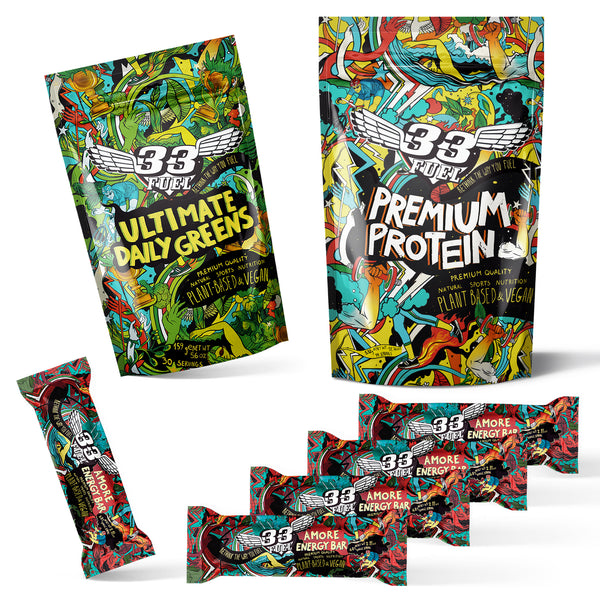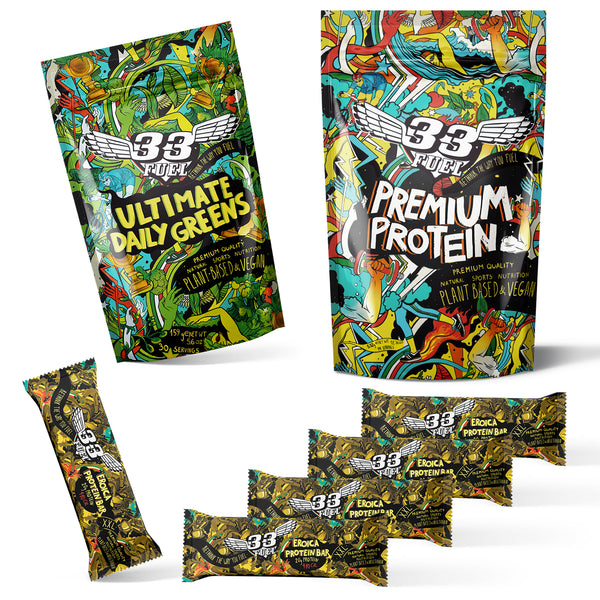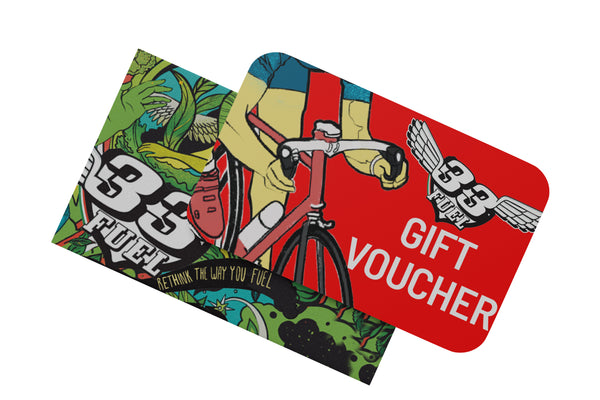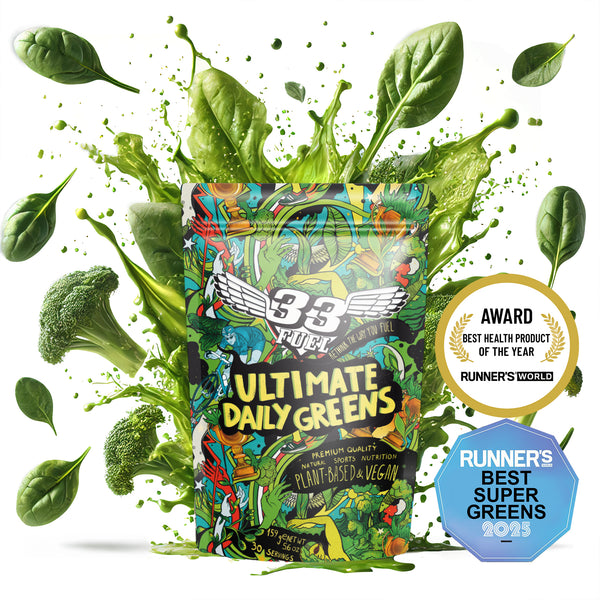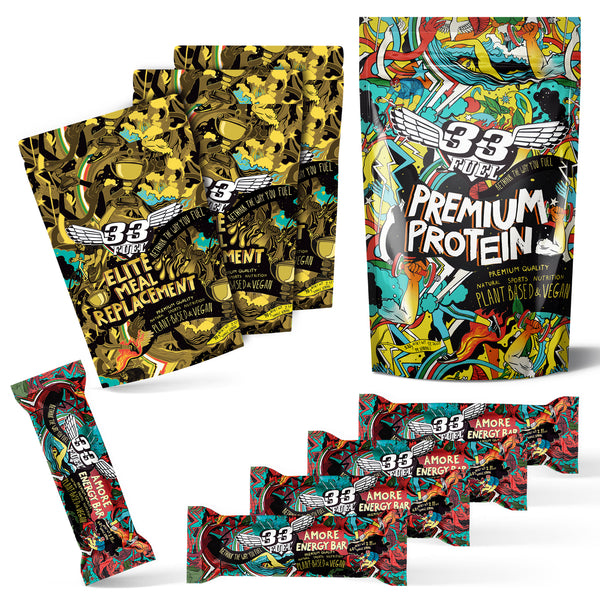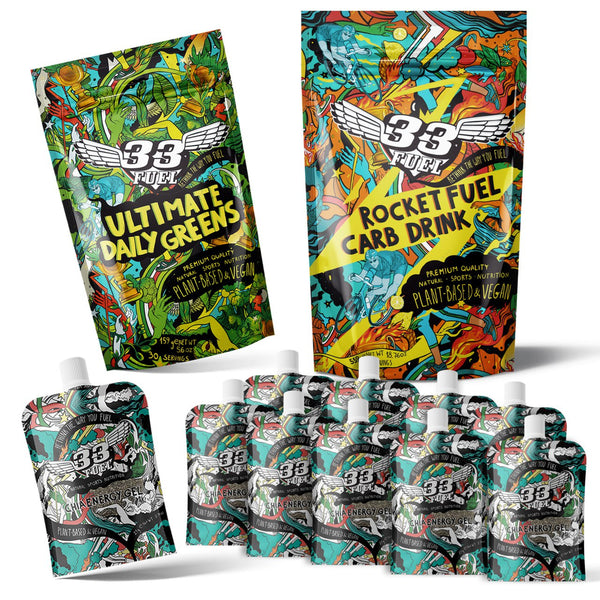How To Race And Train In The Heat

You've probably spend the winter dreaming of blue skies and sunshine - indeed, it's felt like a long winter - but training and racing in the heat has its own challenges. And the higher the mercury rises, the harder they get. Excess heat is a huge (and avoidable) cause of underperformance. Fortunately, with a little preparation you can hammer your way through hot days with ease
How hot is too hot?
This one's all relative. If you grew up in Greenland then anything over ten degrees (celsius) is likely to feel pretty toasty, whereas those hailing from sun-drenched lands might call the same ten degrees 'winter'.
Shop our award-winning sports nutrition
Best Sellers
You only have to see the Spanish tourists sporting winter coats in a London summer, or the English tourists sunbathing in a Spanish winter - in both cases, each to the bemusement of the locals - to see our own personal thermostats are all different.
What matters is your own definition of hot, which is likely to be anything more than a couple of degrees above the average summer temperatures in your home country. As soon as you stray into this territory, you are now officially hot and should prepare accordingly.
Humidity matters
More important than the heat is humidity. The higher the humidity the hotter - and sweatier - it will feel for the same temperature.
The important bit here is the word 'feel'. 
Humidity - to borrow Robin Williams' line from Good Morning Vietnam, 'It's hot and wet. That's nice if you're with a lady but it ain't no good if you're in the jungle". Humidity makes heat feel hotter when training and racing, which impacts how you need to deal with it
Because in dry heat you are basically sweating just as much as you are when it's humid, the difference being the sweat is evaporating before you're really getting a chance to register it.
So while humidity makes it obvious you're sweating and must manage hydration and nutrition, dry heat can be deceptive as the warning signs are less visible, but you're still losing just as much sweat.
To suncream or not?
Less suncream is best - the skin's the body's largest organ and coating it with chemicals is not ideal.
Sensible Sun Exposure
As a basic rule for suncream and any cream or ointment, if you wouldn't eat it, don't put it on your skin.
The other downside of suncream is it allows us to artificially spend longer in the sun than we should naturally which on its own could be damaging, while almost as many studies link suncream to use to cancer, as link its use to avoiding cancer.

Covering up with cream also stops the body absorbing vitamin D from the sun's rays, the only source we can get this all-important vitamin
In an ideal world, you want to build natural tolerance to sun naturally by gradually increasing your time in the sun, cream-free, and without burning. Much evidence suggests a good natural tan is one of the best ways to protect against sun damage and skin cancer.
Endurance legend and elite coach Phil Maffetone has some great advice on natural sun exposure for athletes - more on that here.
Races of course throw all this idealism out of the window.
If you're racing the Marathon des Sables across the Sahara after training through a UK winter for example, popping out to Morocco for a month before the race to 'get a nice natural tan' will likely result in other pain such as divorce, bankruptcy and/or unemployment.
Sun and racing - how to handle it

For long events where you'll be out for hours and are not turning up tanned like David Hasselhoff in Baywatch, there's only one choice - P20
This stuff smells like creosote and fails the 'don't put anything on your skin you wouldn't eat' test above immediately, but for all-day sun protection, despite sweat and without having to reapply it is the business.
Don't forget to add judicious use of hats, visors and sunglasses too to complete your sun warrior look and race out the heat in style.
Nutrition for training and racing in the heat
For ordinary sports nutrition companies now is the time to get all technical bringing out the boffins and the bamboozling spreadsheets, graphs and sweat rates to explain the complex business that is electrolytes.
At 33Fuel however, we believe in actually helping athletes instead of confusing them into submission and so I'm going to let you in on a secret:
- Electrolytes, are a posh word for sodium and potassium. While sodium is a posh word for salt
- Electrolytes aren't complicated, they're just salt and potassium.
And far from only being available in scientific powdery potions, they're actually available - in better quality and for a lot less money - in... food!

Electrolytes are a fancy word for salt and potassium used by the ordinary sports nutrition industry in a bid to make you buy products you don't need. Potatoes are a good source of potassium, and salt is, well salt - which means that plate of chips after your big race in the sun is not only right tasty, it's also an awesome electrolyte source. Winning!
Electrolytes for training and racing in the heat
Which means, when the heat is on, you simply need to be more conscious of getting plenty of added salt and potassium in both during and after exercise.
Brilliant salt sources are:
- Salted nuts - a small bag in your pocket/pack makes a great salt hit on the go
- Salted roast potatoes (cook in advance, cut into bite-sized chunks, wrap individually)
- Salt - as in ordinary sea salt. Put some in a small freezer bag, and dip a finger into it when needed (best not done at airport customs on your way home though)
Brilliant potassium sources are:
- Coconut water
- Bananas
- Avocado
- Potatoes (roast and add salt as above for an electrolyte double whammy)
With naturally occuring electrolyes, Rocket Fuel is for those searching for slow-release energy AND all the electrolytes needed to fire on all cylinders when temperatures crank up
Electrolyte dosage and hydration
Just like heat response, the amount of electrolytes and water needed varies from one person to the next so going by feel is best - remember KISS.
Not the band, although they're pretty good, here I mean the acronym KISS, standing for 'Keep It Simple Stupid'. The basic idea being the simpler something is, the less there is to go wrong.
You can add to this with our 'checking-in' strategy where you make a point of asking yourself if you're thirsty at regular intervals - say every 20 minutes - and then drink each time the answer's yes. This is a great way to keep on top of your thirst during race day excitement, without over or under hydrating.
And drink water - use water for hydration, get all of your nutrients and electrolytes from your food.

When you feel thirsty, drink!
As for the electrolytes, add salty and potassium-rich snacks throughout your session or race, as needed.
There is no one-size-fits-all dosage, testing in training is key.
Just remember that when you're starting to feel low, and if food and drink aren't helping, you're most likely low on electrolytes. Get some in pronto.
And do the same after any big session or race when you sweated buckets by adding plenty of salt and potassium-rich foods to your next couple of meals and snacks.
Add 33Fuel's Chia Energy Gels to your heat-beating toolkit
These little beauties are made with just four natural ingredients - chia seeds, coconut palm sugar, Himalayan pink salt, and vanilla. They utterly rock hot sessions because:
- Himalayan pink salt - some folks take the p*ss out of this one thinking it's fancy for fancy's sake. Truth is, it's simply the purest and most mineral-dense salt there is. If you're doing salt, this knocks absolute spots off anything else
- Unique hydratable formula. When you add water, the chia seeds absorb it to form the gel. This absorbed water is then released gradually back into your body during digestion so your hydration regulation is helped, naturally
- Their hydratable nature means you can add coconut water instead of water for the most delicious - and powerful - electrolyte gel you've ever had
Pace - your secret get out of jail card when heat hits hard
Loaded with naturally occuring vitamins, minerals and electrolytes (not to mention low-GI, slow release carbs), Rocket Fuel is the perfect summer fuel
Your pace is your final secret weapon against the heat, and your ultimate safety net. If you're going into a race or session and fear the heat, start steady as you try to acclimatise, then aim to pace yourself against how you feel in the heat, not by the goal times your watch is telling you to hit based on an assumption of ideal conditions.
Similarly, if you do find the wheels coming off in a hot race - symptoms include nausea, dizziness, confusion and irritability - then slow up at the first sign, and pour in water and electrolytes in small but regular doses and see if that gets the show back on the road.
Training and racing in the heat - conclusion
All you need to smash racing and training in the heat is good prep. Cover up if you must, add water and great electrolyte sources from your food as needed, and keep an eye on the pace remembering to adjust targets to allow for the heat if it's much over what you're used to training in.
Any other heat-beating tactics to share - let us know, we'd love to hear from you!

